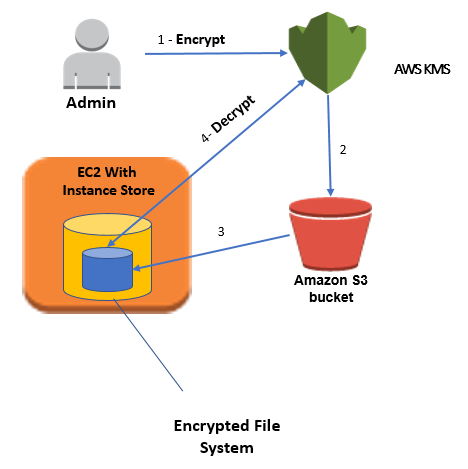AWS Security Blog
Category: Amazon EC2
How to Patch, Inspect, and Protect Microsoft Windows Workloads on AWS—Part 1
Most malware tries to compromise your systems by using a known vulnerability that the maker of the operating system has already patched. To help prevent malware from affecting your systems, two security best practices are to apply all operating system patches to your systems and actively monitor your systems for missing patches. In case you […]
AWS Earns Department of Defense Impact Level 5 Provisional Authorization
The Defense Information Systems Agency (DISA) has granted the AWS GovCloud (US) Region an Impact Level 5 (IL5) Department of Defense (DoD) Cloud Computing Security Requirements Guide (CC SRG) Provisional Authorization (PA) for six core services. This means that AWS’s DoD customers and partners can now deploy workloads for Controlled Unclassified Information (CUI) exceeding IL4 […]
How to Configure an LDAPS Endpoint for Simple AD
September 9, 2020: There’s an updated version of this blog here – https://aws.amazon.com/blogs/security/how-to-configure-ldaps-endpoint-for-simple-ad/. Simple AD, which is powered by Samba 4, supports basic Active Directory (AD) authentication features such as users, groups, and https://aws.amazon.com/blogs/security/how-to-configure-ldaps-endpoint-for-simple-ad/the ability to join domains. Simple AD also includes an integrated Lightweight Directory Access Protocol (LDAP) server. LDAP is a standard application […]
How to Monitor and Visualize Failed SSH Access Attempts to Amazon EC2 Linux Instances
As part of the AWS Shared Responsibility Model, you are responsible for monitoring and managing your resources at the operating system and application level. When you monitor your application servers, for example, you can measure, visualize, react to, and improve the security of those servers. You probably already do this on premises or in other […]
Centrally Manage Tags and Search for Resources Across AWS Services by Using the New Resource Groups Tagging API
Today, we made available the new Resource Groups Tagging API that makes it easier for you to centrally manage tags and search for resources across AWS services and regions. This new API includes five operations that enable you to programmatically tag and untag resources, list resources with a specific tag, and list unique tag keys […]
Easily Tag Amazon EC2 Instances and Amazon EBS Volumes on Creation
In 2010, AWS launched resource tagging for Amazon EC2 instances and other EC2 resources. Since that launch, we have raised the allowable number of tags per resource from 10 to 50 and made tags more useful with the introduction of resource groups and Tag Editor. AWS customers use tags to track ownership, drive their cost accounting […]
How to Monitor Host-Based Intrusion Detection System Alerts on Amazon EC2 Instances
September 9, 2021: Amazon Elasticsearch Service has been renamed to Amazon OpenSearch Service. See details. To help you secure your AWS resources, we recommend that you adopt a layered approach that includes the use of preventative and detective controls. For example, incorporating host-based controls for your Amazon EC2 instances can restrict access and provide appropriate […]
Easily Replace or Attach an IAM Role to an Existing EC2 Instance by Using the EC2 Console
April 13, 2022: This blog is out of date. Please refer to this documentation for updated info: Amazon Elastic Compute Cloud User Guide AWS Identity and Access Management (IAM) roles enable your applications running on Amazon EC2 to use temporary security credentials. IAM roles for EC2 make it easier for your applications to make API […]
How to Protect Data at Rest with Amazon EC2 Instance Store Encryption
April 25, 2023: We’ve updated this blog post to include more security learning resources. Note: By default, an instance type that includes an NVMe instance store encrypts data at rest using an XTS-AES-256 block cipher. See this FAQ about NVMe-supported instance types. If you’re using an NVMw instance type, then data at rest is encrypted […]
How to Monitor AWS Account Configuration Changes and API Calls to Amazon EC2 Security Groups
You can use AWS security controls to detect and mitigate risks to your AWS resources. The purpose of each security control is defined by its control objective. For example, the control objective of an Amazon VPC security group is to permit only designated traffic to enter or leave a network interface. Let’s say you have […]









